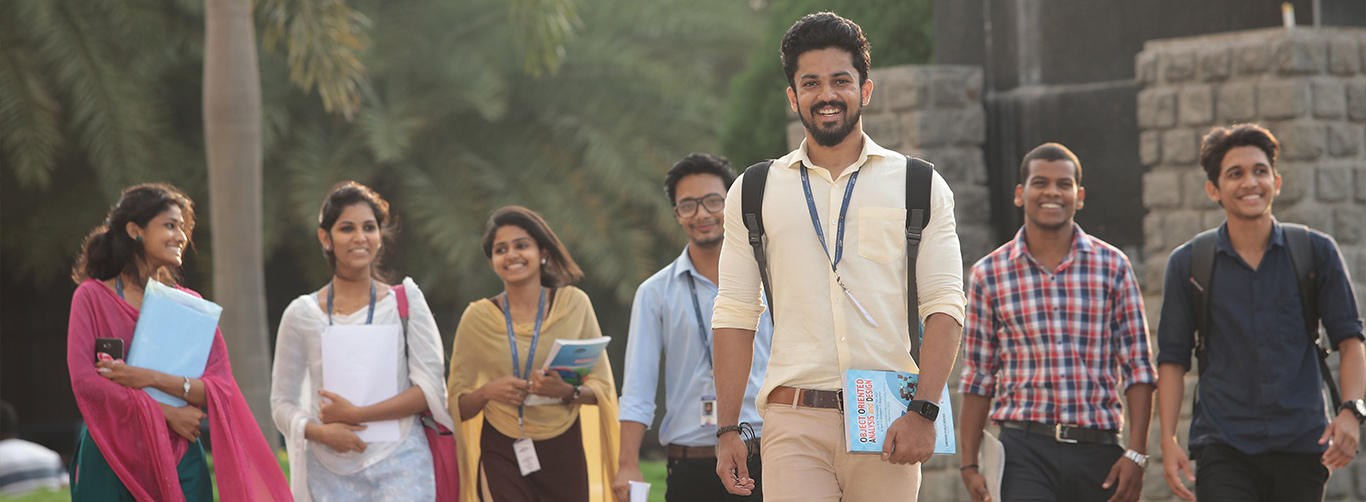
National Assessment and Accreditation Council (NAAC)
Explore AdmissionNational Assessment and Accreditation Council (NAAC)
Click Here: NAAC SSR
Click Here: Data Validation and Verification (DVV)
Appeal Documents
NAAC Accreditation – Appeal Towards NAAC “A Grade”
Qualitative Parameters
| Metrics | Description | Experts Marks | Marks Requested | Justification |
|---|---|---|---|---|
| 2.2.1 | Assessing Learning Levels of Students after admission and organizing special programs for advanced and slow learners | 2 | 4 | Processes Exist; Experts Comments were Good; But given score was low (2 out of 4, 50%) Support Document |
| 2.3.1 | Students Centric Methods-Experiential Learning, Participative Learning & Problem Solving Methods. | 2 | 4 | Practicing all; Experts have verified and were satisfied; But given score was low (2 out of 4, 50%) Support Document |
| 2.6.1 | Dissemination of Program Outcomes, PSOs, COs in all Programs in websites; Awareness among teachers and students | 2 | 4 | JCT has been practicing OBE and obtained NBA Accreditation for its 4 Programs; Experts were satisfied. But given score was low (2 out of 4, 50%) Support Document |
| 2.6.2 | Attainment of CO/PO/PSO | 2 | 4 | All faculty members adopt Course Outcomes and evaluate the same in each course. Likewise, all departments compute PO & PSO. Experts were satisfied. But given score was low (2 out of 4, 50%) Support Document |
| 7.2.1 | 2 Best Practices – Integrated Academic Management System (Automation/ERP System) – Students Skills Development through Industry Sponsored Labs |
2 | 4 | Experts have appreciated both practices. But low score was given (2 out of 4, 50%) Support Document |
| 7.3.1 | Institutional Distinctiveness – Multilingual Students – Rare Branches in Cutting Edge Technologies |
2 | 4 | Experts have appreciated both practices. But low score was given (2 out of 4, 50%) Support Document |
Quantitative Parameters
| Metrics | Parameter | Values | Marks | Justification | ||
|---|---|---|---|---|---|---|
| SSR | DVV | Awarded | Req. | |||
| 3.4.3 | Number of Extension Programs | 11/10/5/4/4, 30 |
5/8/4/2/3, 22 |
1 | 2 | Please consider all Extension Programs. 1.Summary Sheet 2.Evidences |
| 5.3.1 | No. of awards / medals for Sports / Cultural | 7/7/4/3/3, 24 |
1/1/1/0/0, 3 |
1 | 4 | Please consider all awards. 1.Summary sheet 2.Evidences |
| 7.1.10 | Specific Initiatives to address locational advantages | 10/4/6/4/4, 28 |
4/1/1/0/1, 7 |
1 | 4 | Specific Initiatives were considered. Please consider all Initiatives. 1.Summary sheet 2.Evidences |
| 7.1.11 | Initiatives taken to engage with and contribute to local community | 10/4/6/4/4, 28 |
2/2/2/2/2, 10 |
2 | 4 | Please consider all Initiatives. 1.Summary sheet 2.Evidences |
Extended Profile
| 1. | Program | |||||||
| 1.1 Number of courses offered | ||||||||
| 2. | Students | |||||||
| 2.3 Number of outgoing / final year students | ||||||||
| 3. | Teachers | |||||||
| 3.1 Number of full time teachers | ||||||||
| 4. | Institution | |||||||
| 4.1 Number of classrooms and seminar halls | ||||||||
| 4.2 Expenditure excluding salary | ||||||||
| 4.3 Number of computers | ||||||||
Qualitative Parameters - Criteria
Quantitative Parameters - Metrics
| Criteria | Link for Quantitative Metrics | ||||||||
|---|---|---|---|---|---|---|---|---|---|
| I | 1.1.2 | 1.1.3 | 1.2.1 | 1.2.2 | 1.2.3 | 1.3.2 | 1.3.3 | 1.4.1 | 1.4.2 |
| II | 2.1.1 | 2.1.2 | 2.1.3 | 2.2.2 | 2.3.2 | 2.3.3 | 2.4.1 | 2.4.2 | 2.4.3 |
| 2.4.4 | 2.4.5 | 2.5.1 | 2.5.2 | 2.5.3 | 2.5.4 | 2.6.3 | |||
| III | 3.1.1 | 3.1.2 | 3.1.3 | 3.2.2 | 3.3.1 | 3.3.2 | 3.3.3 | 3.3.4 | 3.3.5 |
| 3.4.2 | 3.4.3 | 3.4.4 | 3.5.1 | 3.5.2 | |||||
| IV | 4.1.3 | 4.1.4 | 4.2.3 | 4.2.4 | 4.2.6 | 4.3.2 | 4.3.3 | 4.3.4 | 4.4.1 |
| V | 5.1.1 | 5.1.2 | 5.1.3 | 5.1.4 | 5.1.5 | 5.1.6 | 5.2.1 A | 5.2.1 B | 5.2.2 |
| 5.2.3 | 5.3.1 | 5.3.2 | 5.3.3 | 5.4.1 | 5.4.2 | 5.4.3 | |||
| VI | 6.2.3 | 6.3.2 | 6.3.3 | 6.3.4 | 6.4.2 | 6.5.3 | 6.5.4 | ||
| VII | 7.1.1 | 7.1.2 | 7.1.4 | 7.1.5 | 7.1.6 | 7.1.7 | 7.1.8 | 7.1.9 | |
| 7.1.10 & 7.1.11 | 7.1.12 | 7.1.13 | 7.1.14 | 7.1.15 | 7.1.16 | 7.1.17 | 7.1.18 | ||

